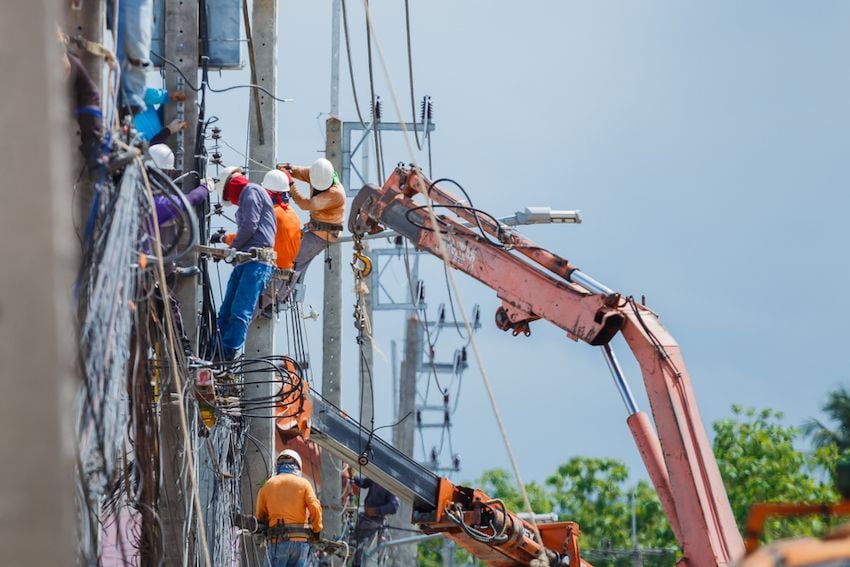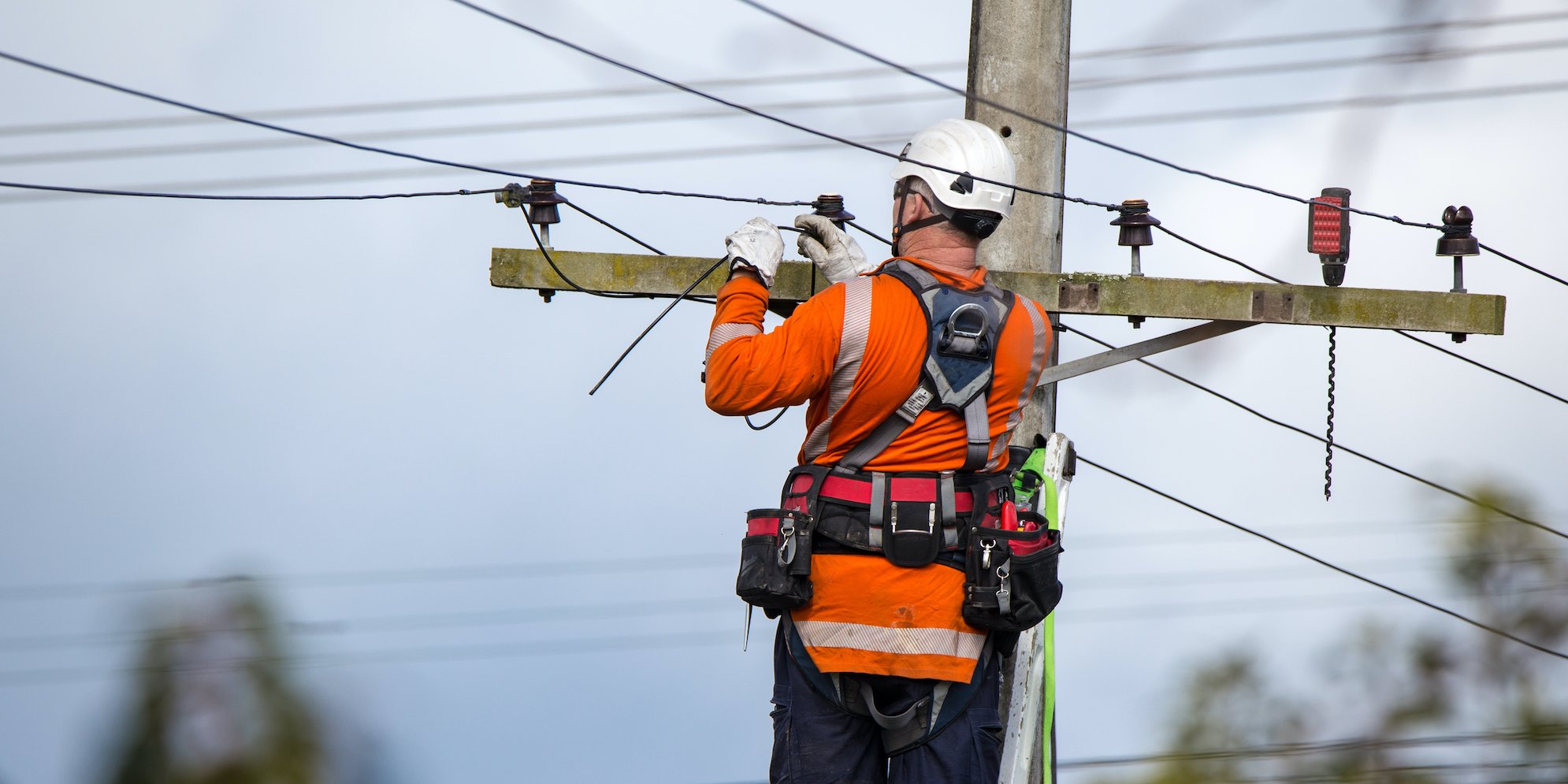According to the Bureau of Labor Statistics (BLS), there were 200,100 nonfatal work-related injuries or illnesses in the construction industry in 2019. An additional 1,066 construction and extraction workers died of work-related injuries, according to the BLS. This number represents a 6 percent increase from the previous year and the highest figure since 2007.
Construction work is inherently dangerous, but that doesn’t mean injuries and fatalities are unavoidable. Here, we examine the most common construction hazards—falls, struck by, caught in/between, and electrocution—and offer tips to prevent incidents, including using construction safety management software.
Prevent incidents from the most common construction hazards
Falls
Some 880 people died from slips, trips, and falls in 2019, according to the BLS. This is an 11 percent increase from 2018. This might not be surprising when you consider that the Occupational Safety and Health Administration (OSHA) cited companies for violations of the construction standard for fall protection more than any other standard in fiscal year 2019. General scaffolding requirements and ladder standards in construction were also among OSHA’s most frequently cited standards in that period.
The majority of deadly falls happen when workers fall from elevation (i.e. a higher level to a lower level). Construction supervisors should follow these tips to prevent falls from elevation:
- Use personal fall arrest systems.
- Install and maintain perimeter protection.
- Cover and secure floor openings, and label floor opening covers.
- Use ladders and scaffolds safely.
Same-level falls are less likely to result in death, but they can cause injuries like sprains and fractures that require time off work. To prevent same-level falls, ensure proper ladder use and keep work areas clear of tripping hazards like loose gravel, tattered mats, and tangled wires. Also, instruct workers to be on the lookout for slick surfaces, particularly after inclement weather.
You might like: 7 Steps For Successful Safety Stand Downs
Struck by
Construction sites are never short on movement. Heavy and/or fast-moving objects are particularly threatening to workers. In 2019, more than 500 workers died when they were struck by a vehicle or object, including falling, discharged, and flying objects.
One way to prevent injuries and fatalities from moving construction hazards is to ensure workers are wearing the proper protective equipment including hard hats and high-visibility clothes. Construction supervisors should also emphasize the importance of workers staying aware of their surroundings. Workers can be killed if positioned between moving and a fixed object, for example, but the worst is preventable when they’re on the lookout for this scenario.
Related: Winter Safety Tips to Prevent Workplace Accidents and Injuries
Caught in/between
In 2019, 120 workers died after being caught in or compressed by equipment or objects, according to the BLS. An additional 83 died when they were struck, caught, or crushed in collapsing structure, equipment, or material.
Unprotected trenches are particularly dangerous. According to OSHA, one cubic yard of soil can weigh up to 3,000 pounds—the weight of a small automobile—giving a worker in a trench little chance of survival if the walls collapse.
In the case of trenches, prevent injuries and fatalities by protecting all trenches or excavations 5 feet or deeper with an adequate system such as sloping, shoring, benching, or trench shield systems. (Shallower trenches may also require protection.) Also, instruct workers to never enter a trench if it is not properly protected, even if they’re just completing a short task.
Electrocution
Some 642 workers died in 2019 after exposure to harmful substances or environments, according to the BLS. One-quarter of these deaths (166) were from exposure to electricity.
To prevent injuries and fatalities caused by electrocution, construction supervisors should instruct their workers to:
- Locate and identify utilities before starting work.
- Look for overhead power lines when operating any equipment.
- Maintain a safe distance away from power lines.
- Only use grounded or double-insulated portable electric tools.
- Use ground-fault circuit interrupters for protection.
- Be alert to electrical hazards when working with ladders, scaffolds, or other platforms.
Watch: Lee Shelby on “The Personal Side of Safety”
Anticipate construction hazards with worker safety software
Even with proactive safety measures, supervisors will not be able to prevent all injuries and fatalities relating to common construction hazards on their own. According to research by Matthew Hallowell, Ph.D., Director of the Construction Safety Research Alliance (CSRA), highly experienced workers can only identify 45 percent of hazards on a construction site. This means more than half of construction hazards go unnoticed—often until it’s too late.
The good news is safety management technology like Urbint Lens for Worker Safety can help supervisors spot hard-to-recognize construction hazards days in advance. The worker safety software uses artificial intelligence (AI) to identify the most hazardous scheduled activities so supervisors can implement the appropriate safety actions. Used in conjunction with other proactive safety measures like training and safety audits, Urbint Lens for Worker Safety can prevent injuries and fatalities from happening.
See the Urbint Lens for Worker Safety webpage for more information on the software.

